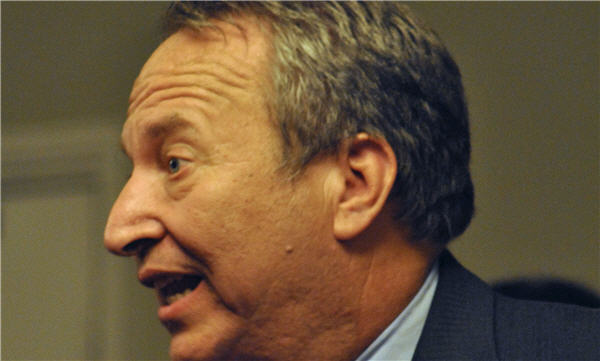
Stop the presses!
The process to find a replacement for Ben Bernanke as Chairman of the US Federal Reserve has devolved into a two-horse race, between economists Lawrence Summers and Janet Yellen.
Summers – who certainly has his fair share of detractors – was US President Obama’s chief economic adviser in the aftermath of the sub-prime crisis and Treasury Secretary under President Clinton from 1999-2001.
Yellen is a former President of the Federal Reserve of San Francisco and a long time Fed insider who has worked closely with Bernanke and his predecessor, Alan Greenspan.
She is also considered the main architect of the US central bank’s quantitative easing program, which kicked off in December of 2008.
FT.com (paywall) reports the Obama administration “has framed its selection criteria in a way that makes” Summers “the obvious choice”, but his views on monetary policy is not well known.
Markets “may be surprised his apparently hawkish stance on QE” and his preference for fiscal rather than monetary policy to steer the economy argues the FT:
“QE in my view is less efficacious for the real economy than most people suppose,” said Mr Summers according to an official summary of his remarks at a conference organised in Santa Monica by Drobny Global, obtained by the Financial Times.
[…] “I think the market is underestimating the pace at which the Fed will alter its current course and the consequences of that for interest rates,” he said.
[…] Mr Summers said that while QE does little good it also does little harm. “If QE won’t have a large effect on demand, it will not have a large effect on inflation either,” he said.
Under the third, open-ended round of QE which was first announced in September last year, the Fed buys up Treasurys and mortgage bonds to the tune of $85 billion a month.
The Fed’s balance sheet crossed the $3 trillion mark early into 2013 and is set to top $4 trillion by the end of the year if the current pace is kept up.
QE, which essentially floods markets with cheap money, increases gold’s allure as a hedge against inflation amid currency depreciation.
The sell-off on precious metals markets this year has been mostly as a result of fears that ultra-loose monetary policy may come to an end sooner rather than later.
Gold was last trading at $1,330 an ounce, up from near three-year lows reached at the end of June.
The gold price has increased 58% since QE1 when the ruling price was $837 an ounce.
SEE ALSO: Bernanke “doesn’t pretend to understand gold prices” and “nobody does”
FLASHBACK: A Romney win could spell disaster for gold